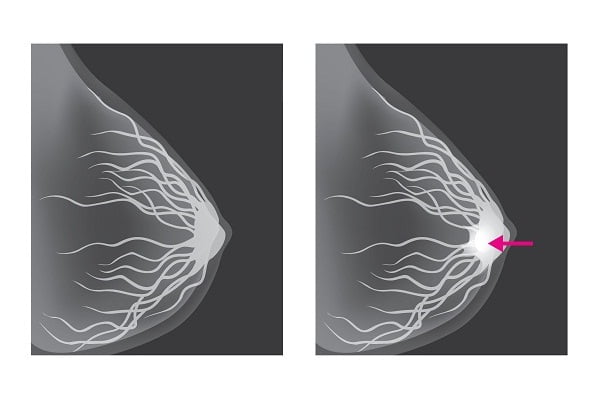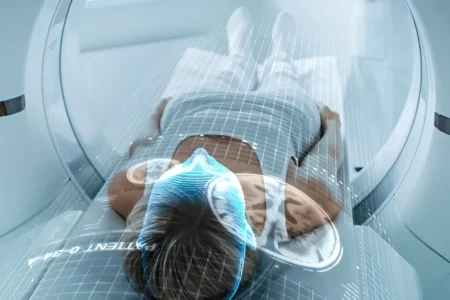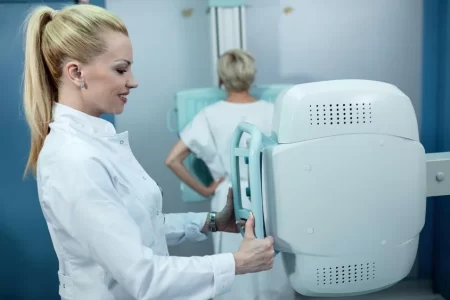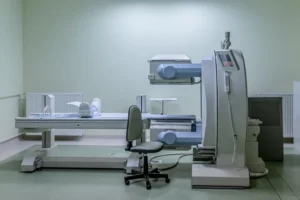What Is a Mammogram?
- Updated on: Jun 26, 2024
- 4 min Read
- Published on Jun 10, 2019


What’s a mammogram screening?
A mammogram is an important screening tool for breast problems. Mammogram is an essential instrument to detect breast cancer even if there are any minor signs and symptoms. Mammogram takes pictures of the breasts with the help of small doses of X-rays. X-rays help in detecting those tumors or lumps which cannot be seen or felt during a physical examination.
Mammography is a distinct type of imaging technique that mechanizes low dose x-rays to diagnose early breast cancers in women in its most curable stage. Any abnormal structures in the breasts are detected with the help of a mammogram. An abnormal result of a mammogram exam does not mean that the woman is suffering from breast cancer. For confirmation, other additional tests are conducted.
When to get a mammogram?
Women are often confused about when to get a mammogram screening done. Doctors recommend that mammogram frequency in women of age 40 and above should be at least once in every 2 years to reduce the chances of breast diseases. Healthcare professionals suggest that even those women who have no signs and symptoms should also routinely get mammogram screening done to help detect and reduce any risk of breast cancer.
Lumps or specks which develop either due to cancer, fatty cells, or due to other conditions like deposition of calcium (micro-calcification) or formation of cysts might also be detected in breast mammograms.
When patients question healthcare professionals about where can they get a mammogram screening done, the doctors usually recommend them to visit breast assessment clinics which are FDA approved.
In general, mammogram cost is high. It is expected to vary from 80$ -200$ in a wide spectrum.
Types of mammograms
Mammograms are basically classified into two categories:
Screening mammogram: Screening mammograms are used to test women with no symptoms of breast cancer. The main aim of conducting screening mammography is to diagnose the disease at an early stage so that it can be easily treated. This technique has helped in reducing a lot of deaths in women.
Diagnostic mammogram: Diagnostic mammogram is used in cases when some usual symptoms are observed in a patient. Some unidentified lumps or suspicious breast lesions might be felt in the breasts which are diagnosed through diagnostic mammography.
Recent advancements and researches have brought digital mammography in use. Digital mammogram screening is used for better and accurate analysis in case of any abnormality felt or found in the breasts.
What is Digital Mammography?
Digital mammography is also known as full-field digital mammography (FFDM). Digital mammography is a system where the x-rays are converted into mammographic pictures of the breast with the help of a computer. This technique is similar to that of a digital camera system for better and sharp pictures with a lower radiation dose.
Digital mammograms include computer-aided detection mammogram and 3d (three-dimensional) mammogram or breast tomosynthesis.
- CAD mammography: A digital mammography technique is the use of computer-aided detection (CAD) systems. It is a FDA approved system which is based on pattern recognition technology. In CAD, pictures of areas of abnormal density, mass, or calcification are taken and these abnormal mammograms are studied to eliminate or lower the risk of various types of cancers.
- Breast tomosynthesis: Breast tomosynthesis is also known as three-dimensional (3-D) mammography or digital breast tomosynthesis (DBT). 3D mammography is an upgraded form of breast imaging in which several images at different angles are captured and reformed or synthesized as a three-dimensional image set with the help of computer software. Computed tomography (CT) and digital breast tomosynthesis (DBT) are used to construct a 3d-image of the body and both, CT and DBT work in similar patterns.
In some breast tomosynthesis systems, the dose or amount of radiations used is higher when compared to the dose used in normal mammograms. The dosage is approved by FDA to ensure safe levels during mammography.
Breast tomosynthesis is a better technique as the results are found to be more accurate. 3D mammography helps in:
- early detection of small breast cancers which were not diagnosed during conventional mammography
- the accuracy is higher in detecting the size, shape and location of breast abnormalities
- with clear and improved image quality multiple tumors in the breasts are easily detected, even in cases of dense breast tissues
- chances of retesting and biopsy are reduced
Surveillance mammography: Another type of mammogram screening technique is known as surveillance mammography which is used in case of recurrent breast cancer or malignant cancer in women.
Mammogram Procedure for Breast cancer
Steps in breast cancer mammography:
- The suspect of breast cancer visits a breast assessment clinic and gets prepared for a getting a mammogram.
- For a breast cancer mammogram, suspected woman is made to stand in-front of the mammogram which is a special kind of X-ray machine.
- The breast is then placed on the clear plastic plate and another plate (upper) is used to press or flatten it firmly.
- X-ray pictures are taken in a few seconds and then the upper plate is released.
- Then, same steps are repeated to take side view pictures of the breasts. In some cases, if pictures are not clear or results are vague then the same procedure is repeated again or other tests are conducted for confirmation. This is called mammogram call back.
Is mammogram painful? Some people say it pains during a mammogram screening. This is not actually true. A few women might feel some pressure or discomfort during this procedure but mammography is not a painful procedure. The discomfort is due to the compression applied to the breasts during mammogram screening.
During the screening procedure, the mammogram plate flattens the shape of the breast in order for the x-rays to travel through a shorter path to reach the detector. This helps in reduction in the amount of X-rays (dosage) and also leads to improvement in the image quality. Compression, therefore, allows better detection for all the tissues to be visualized in a single plane.
A mammogram is an important screening tool for breast problems. Mammogram is an essential instrument to detect breast cancer even if there are any minor signs and symptoms. Mammogram takes pictures of the breasts with the help of small doses of X-rays. X-rays help in detecting those tumors or lumps which cannot be seen or felt during a physical examination.
Mammography is a distinct type of imaging technique that mechanizes low dose x-rays to diagnose early breast cancers in women in its most curable stage. Any abnormal structures in the breasts are detected with the help of a mammogram. An abnormal result of a mammogram exam does not mean that the woman is suffering from breast cancer. For confirmation, other additional tests are conducted.












